The moment when I realized Star Wars Jedi: Survivor was an open world game was a profound and hilarious one. As Cal Kestis approached the Koboh ridge and looked past the horizon, I felt myself reliving a moment countless games have tried to capture since Fallout 3 — the reveal. The world is your oyster moment.
That scene in Jedi: Survivor is a perfectly fine moment, but the hilarious part came when the framerate immediately took a hasty dive well below 30 fps, despite playing in performance mode on Xbox Series X. I guess Jedi: Survivor is more like Fallout 3 than I thought.
That sense of awe and wonder cut short by technical issues is my experience with Jedi: Survivor in a nutshell. This is an awesome Star Wars game that gets a lot right about the gameplay genres it takes on, but the journey comes with some major caveats.
Jedi: Survivor is a Metroid Prime style 3D action-adventure game, full of revisiting old areas with new tools and perspectives. Fallen Order dabbled in these ideas, but Survivor embraces them wholly — and in doing so, pushes into a full-fledged open world.
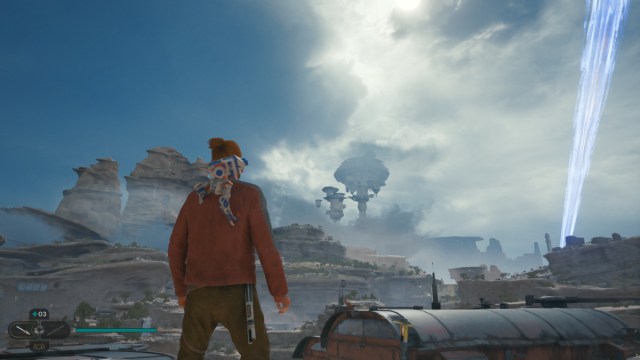
Five years after the events of the first game, Jedi Cal Kestis is separated from the cast of Fallen Order and finds himself tied up with the Empire on Coruscant. This cold open leads into an extended prologue that introduces you to Cal’s Jedi powers and starts to explain what happened to the old Mantis crew. After these first 90 minutes, Cal and his new buddy Bode escape to Koboh, your home base in Jedi: Survivor and the place where the story actually begins.
By the end, I loved where it took me, but if there’s one narrative critique I’ll take Jedi: Survivor to task for, it’s the slowness of this opening. It takes about four hours of gameplay for the inciting incident of the story to occur, and that’s if you are mainlining the story. By that time, you’ve already sprung onto Koboh like a womp rat onto the various, already-explorable side areas.
You can easily put a dozen or more hours into Jedi: Survivor and still have question marks on your pause screen for the game systems you haven’t even discovered yet. That can be a major pacing issue for a game that’s firing on all cylinders once everything is unlocked.
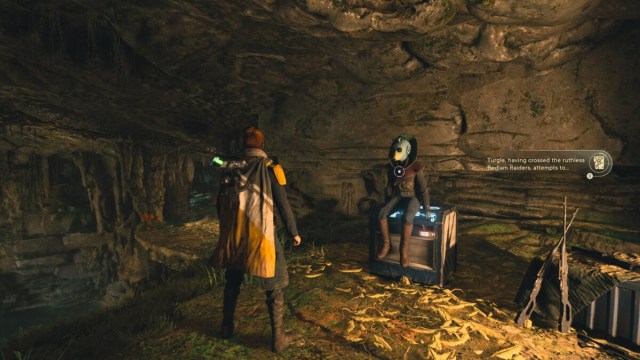
Like its predecessor — and in so many ways like Respawn’s only other single-player game, Titanfall 2 — there are two modes of gameplay in Jedi: Survivor: combat and platforming.
The platforming in Jedi: Survivor is heavy on wall-runs, larger-than-life leaps, and a new grappling hook. The game has a lot of climbing and platforming in the Uncharted tradition, but Respawn introduces a fluidity that’s once again reminiscent of the movement in Titanfall 2. In its most cinematic moments, the game uses these platforming sections to show you just how damn good it looks too.
The lightsaber combat and Force powers that Cal wields are back in Jedi: Survivor, but with some big changes. Each lightsaber type now makes up a Stance, each with its own moveset and skill tree. There are five Lightsaber stances total, and Cal can have two equipped at one time, switching freely between the two.
It makes him a flexible and dynamic fighter, but it also allows you to truly choose a direction to spec in. Different Stances will naturally be more useful against certain enemy types, but every encounter is designed around using whichever style you prefer.
During Survivor, you fight a great variety of enemies, from Battle Droids to Bounty Hunters. Each feels distinct and true to Star Wars. The Stormtrooper and Battle Droid banter is top-notch yet again, as well. Slicing down a battalion Jedi-style is as much a challenge as it is a showcase in style. It’s no Sekiro or Nioh, but there’s greater flexibility than in Fallen Order. The lightsabers hit hard, and the Force powers are myriad. What more can you ask for?
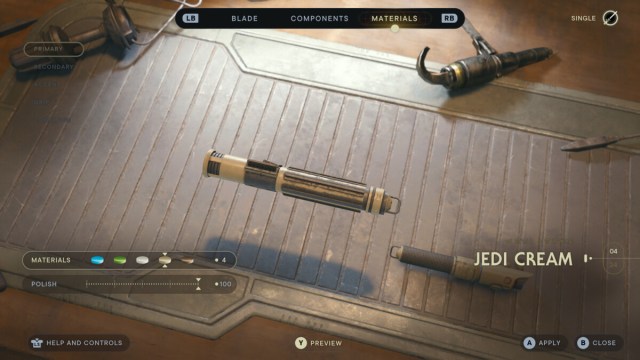
Accessibility options, as it turns out, are something fans were asking for. And Respawn has heard and delivered in one of the most thorough suites of accessibility options I’ve seen in a AAA game to date. Personally, turning off damage from falls and missed jumps was a big one that helped me (mostly) blow through Jedi Master difficulty and focus only on taking damage in combat.
You can adjust options like this, Slow Mode, and more without any pushback from the game. It’s not just the options that make the game more accessible than its predecessor, but enhancements like fast travel and extremely communicative and legible maps. Jedi: Survivor wants you to see everything it’s got. And what it’s got is a lot.
Planets are dense with combat and platforming challenges, and BotW Shrine-like Chambers that will test your puzzle skills. Each planet in Jedi: Survivor is an intricately-connected space that allows a cinematic linear progression through them while opening it up for replay in the process. The shortcut-heavy structure allows you to explore outward and not always forward. Each area feels designed both with the scripted segments and replayability in mind.
Where Jedi: Survivor succeeds most is in making every little nook, cranny, and secret fun to get to. Whether it’s an optional platforming section or a hidden boss, these challenges are so fun to complete you’ll often not even care that your reward is a new paint job for BD-1.
Respawn has leaned into the customization of Cal and his tool kit a lot more, which makes sense since there are a lot more cosmetics to find. In Jedi: Survivor, optional paths will sometimes reward you with a stim upgrade, a skill point, or more maximum Force or Life energy — but usually, it’s a hairstyle or jacket for Cal.
Look, I love dressing Cal up like a Ken doll, but I admit that it’s not everyone’s thing. Still, I think designing these games any other way would fly in the face of the strides Respawn has made in terms of accessibility. There’s nothing truly vital hidden in this world. Everything you need to progress and need to see all the side content is given to you via the main story.
Star Wars has a huge audience, and despite the backtracking in Survivor being A-tier backtracking, some people just instinctually won’t do that. Which is why the game gives you plenty of reasons to go back out there.
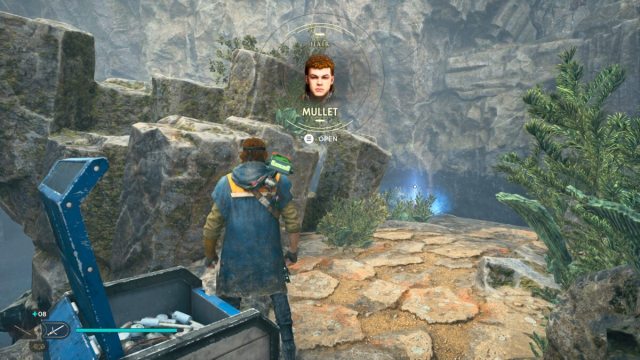
At the center of Koboh, one of your two hubs — your main hub — is Pyloon’s Saloon. Cal’s pal and Mantis owner Greez Dritus has made a dump into the best watering hole on this ole-timey space-prospecting planet. And you’ll fill it full of kind faces you see out in the world. The cast of characters you’ll gather at Pyloon’s extend beyond just Turgle and Greez.
Over the course of the game, Pyloon’s Saloon began to feel like home. It takes on a literal hub-like space in the game since multiple vendors call it home, but the characters and space are so remarkably well-fleshed out. In these moments, talking to these characters, hearing their Rumors (Jedi: Survivor’s dynamic side quests), and learning about them made me feel like I was in a Star Wars RPG. The ancillary character writing helps Jedi: Survivor transcend being just a good action adventure. It’s a Star Wars world worth soaking in.
All those little moments come back at the end, where Jedi: Survivor starts to hit its gut punches. I won’t spoil where everything goes, but I found myself surprisingly emotional over how the whole affair wrapped up. Respawn took a bigger swing with narrative this time around, and it largely paid off, despite the story taking a backseat to your personal journey through the game’s worlds in the middle of everything.
On reflection, perhaps the narrative displays a similar symptom of bloat to the game itself.
Which is to say, there’s just maybe a bit too much here. From the way the narrative progresses at molasses-like speeds at times to the oversaturation of the platforming, it feels like a more stable version of this game could exist if it were scaled back a touch. If the new big Star Wars game didn’t need to say open-world on the box, maybe this game could have been just a great Metroidvania. Or maybe this was Respawn’s vision, and they simply need more time. Either way, the result is messy as it stands.
This instability reared its ugly head again when the final boss got somehow pushed off the arena into the abyss, soft-locking me in the last room of the game. I was forced to restart the fight in a cruel final reminder of the extreme highs and lows that make up Jedi: Survivor at launch.
Star Wars Jedi: Survivor doesn’t just have a mess of frame-rate and screen-tearing issues; it has legitimate stinkers like this too. Which sucks, because the game is largely a blast to play, a feeling that continued through the entire 30 hours — as did the technical hiccups.
Star Wars Jedi: Survivor Review — The Bottom Line
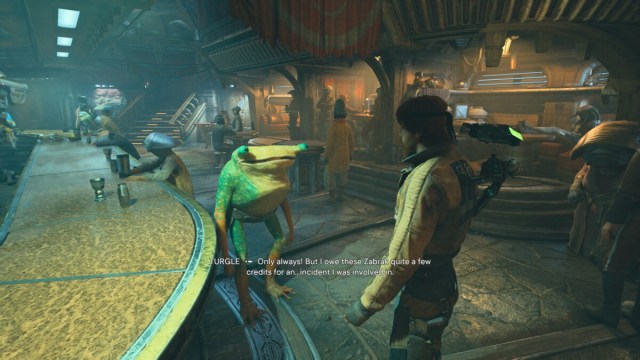
Pros
- Lightsaber stances make combat even more nuanced than the first game.
- Emotional story that comes together by the end.
- It’s a good metroidvania this time!
- Thorough accessibility options
- Pyloon’s Saloon and its loveable dirtbags
Cons
- Moderate to Severe Technical issues — framerate drops, screen tearing, pop-in, game-breaking bugs, etc.
- You’re still doing a lot of backtracking and exploring just to find cosmetic upgrades, which might bother genre purists
- Pretty slow start to the narrative that takes a while to hook you in
For a game made in three years (most of that time as a completely remote team), the scale and ambition of Star Wars Jedi: Survivor is most impressive. The feeling that Respawn is pushing the boundaries of the Unreal Engine past its breaking point is prevalent and demonstrable in the numerous performance issues and bugs, so you might want to wait to pick this up until many of the fixable issues have been addressed.
[Note: EA provided the copy of Star Wars Jedi: Survivor used for this review.]










Published: May 4, 2023 08:55 pm